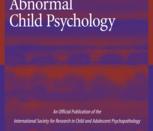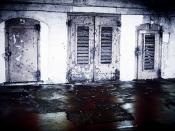Child Psychology
Abstract
Autism is considered a neurobiological disorder. However its exact origin is not known. There is a variety of treatment approaches available. This paper introduces some of them and describes Applied Behavior Analysis and the Developmental, Individual-Difference, Relationship-Based (DIR) Model in more detail. Up to this date we cannot say for sure which treatment is the best for a child born with autism.
Autism is one of the five disorders called Pervasive Developmental Disorders (PDD). It is considered to be of neurobiological origin and its exact cause is not known. It usually becomes apparent before age three, disrupts communication and social skills, and may also be displayed in repetitive patterns of behavior, interest and activities.
Different approaches for the treatment of autism are available today.
TEACCH
TEACCH (Treatment and Education of Autistic and related Communication handicapped Children) is a program started by the University of North Carolina.
It was developed in the 1970's by Eric Schopler. The program is structured around each individual's abilities and tries to improve the child's communication and social skills; it teaches daily activities and may even provide instructions for a job. The program provides a structured classroom environment but does not use any specific technique.
Picture Exchange Communication Systems (PECS)
PECS was developed by the Delaware Autistic Program in 1985 to help autistic and children with other language problems, to communicate. The program teaches the children on the basis of ABA (Applied Behavior Analysis) to exchange pictures for what they want. Two advantages of this program are that it can be used with everybody outside of the child's usual circle and the child initiates it.
Social Stories
Carol Gray developed the use of Social Stories in 1991 to help children affected by autism develop "Theory of mind." Each story is constructed...


